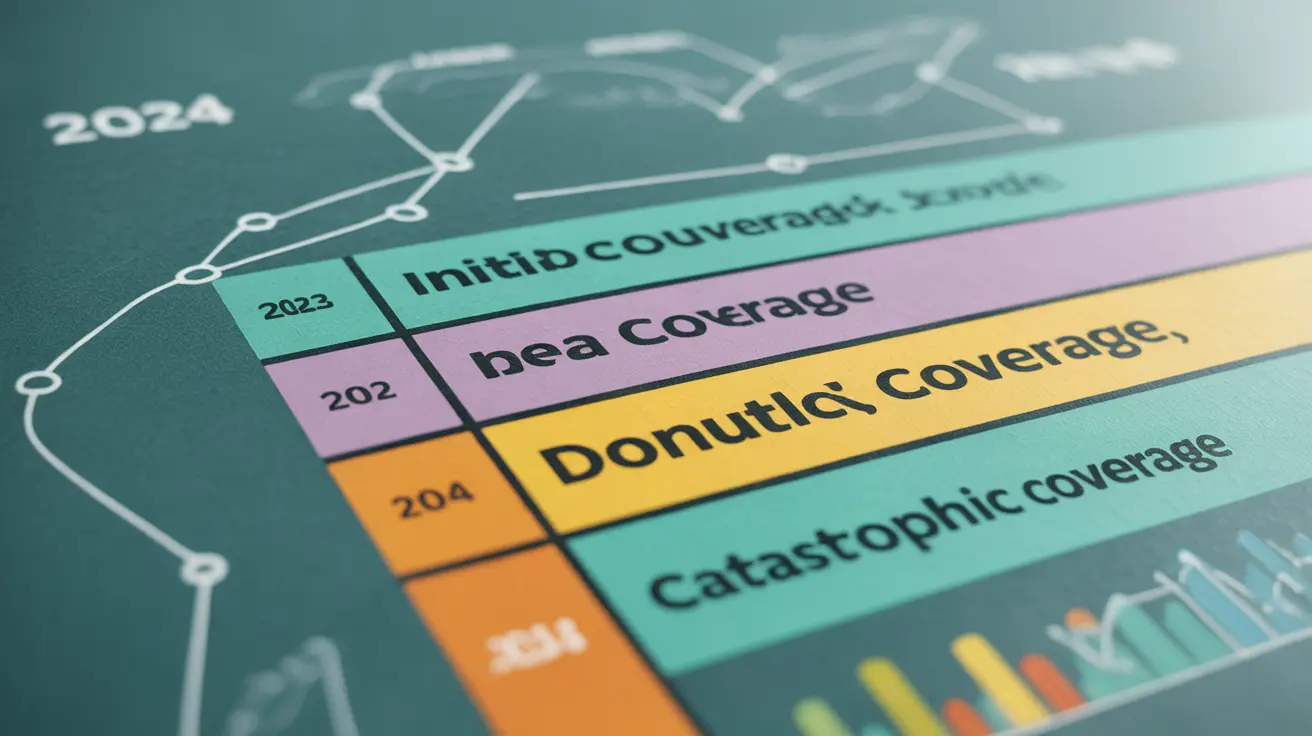The Medicare donut hole, also known as the coverage gap, remains a critical aspect of Medicare Part D prescription drug coverage in 2024. As beneficiaries navigate their prescription drug benefits, understanding how this coverage gap works and what changes are coming can help them better manage their healthcare costs.
This comprehensive guide explains the current state of the Medicare donut hole in 2024 and outlines important changes coming in 2025 that will significantly impact out-of-pocket prescription drug expenses for Medicare beneficiaries.
What Is the Medicare Donut Hole?
The Medicare donut hole represents a temporary limit on what Medicare Part D will cover for prescription drugs. In 2024, this coverage gap begins when you and your plan have spent a combined total of $4,660 on covered drugs. During this phase, beneficiaries pay a higher percentage of their prescription drug costs until reaching the catastrophic coverage threshold.
Current Coverage Phases in 2024
Initial Coverage Phase
Before entering the donut hole, beneficiaries are in the initial coverage phase after meeting their deductible. During this phase, they typically pay 25% of prescription drug costs, while their plan covers the remaining 75%.
Coverage Gap (Donut Hole) Phase
Once in the donut hole in 2024, beneficiaries pay:
- 25% of the cost for brand-name drugs
- 25% of the cost for generic drugs
Catastrophic Coverage Phase
In 2024, catastrophic coverage begins when out-of-pocket spending reaches $7,400. During this phase, beneficiaries pay significantly less for their prescriptions for the remainder of the year.
Important Changes Coming in 2025
Significant reforms to Medicare Part D will take effect in 2025, bringing substantial improvements to prescription drug coverage:
- Implementation of a $2,000 annual out-of-pocket cap
- Elimination of the catastrophic coverage phase
- Introduction of new cost-sharing structures
- Option to spread out high prescription costs through monthly payment plans
Assistance Programs During the Coverage Gap
Several programs are available to help beneficiaries manage prescription drug costs during the donut hole phase:
- Extra Help (Low-Income Subsidy) program
- State Pharmaceutical Assistance Programs (SPAPs)
- Manufacturer assistance programs
- Medicare Savings Programs
- Prescription discount cards and programs
Frequently Asked Questions
What is the Medicare donut hole and how does it affect prescription drug costs in 2024?
The Medicare donut hole is a coverage gap that begins when you and your plan have spent $4,660 on covered drugs in 2024. During this phase, you pay 25% of the costs for both brand-name and generic drugs until reaching the catastrophic coverage threshold of $7,400 in out-of-pocket spending.
How does the Medicare Part D coverage gap work before it is eliminated in 2025?
Until 2025, the coverage gap continues to function with beneficiaries paying 25% of drug costs after reaching the initial coverage limit. Manufacturer discounts and plan payments count toward reaching the catastrophic coverage threshold.
What changes to Medicare Part D coverage and out-of-pocket costs will take effect in 2025?
In 2025, Medicare Part D will implement a $2,000 annual out-of-pocket cap, eliminate the catastrophic coverage phase, and introduce new cost-sharing structures. Beneficiaries will also have the option to spread high prescription costs across monthly payments.
How does the new $2,000 out-of-pocket cap in 2025 improve prescription drug affordability?
The $2,000 cap provides significant financial protection by limiting annual out-of-pocket prescription drug expenses. This change makes costs more predictable and helps beneficiaries avoid excessive spending on necessary medications.
Are there assistance programs that help Medicare beneficiaries with drug costs during the donut hole phase?
Yes, several assistance programs are available, including Extra Help, State Pharmaceutical Assistance Programs, manufacturer assistance programs, Medicare Savings Programs, and various prescription discount programs. These can help reduce costs during the coverage gap period.




